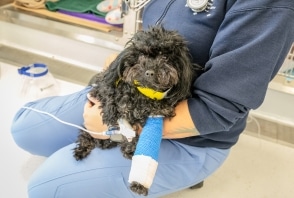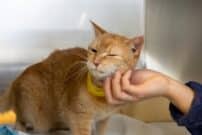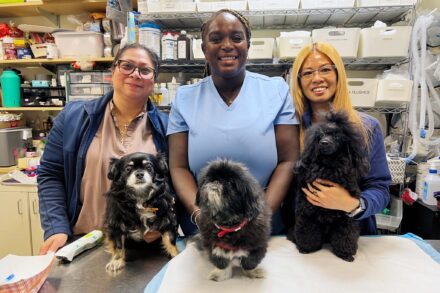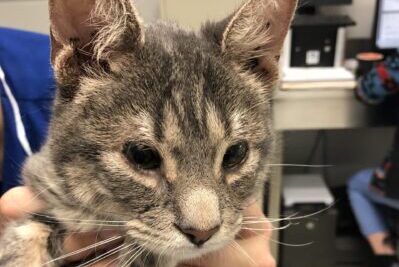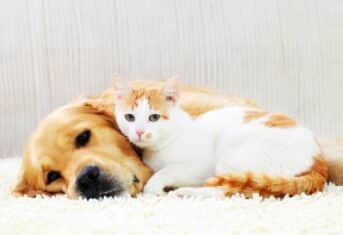The Bunny: A Tale of Blood Types
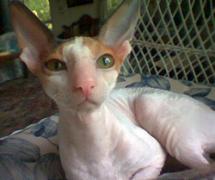
The Bunny: A Tale of Blood Types
This is my patient “The Bunny,” who is not a rabbit but a blue, cream and white Cornish Rex cat. As you can see from this photo, The Bunny is an unusual cat. Her name comes from her dominant facial feature — those large ears, set high above her Roman nose. From the photo, taken by her owner, you can see her short coat has washboard waves. The Cornish Rex is a recognized breed by the Cat Fancier’s Association. What you can’t see on the photo is another unusual feature of this fancy feline. The Bunny has type B blood. Most cats live their lives without knowing their blood type. But certain breeds have a higher number of cats in their population with this rare type and the Cornish Rex is one of those breeds.
From The Bunny’s viewpoint, having blood type B changes nothing. From my viewpoint, if she ever needs a blood transfusion, finding a donor will be difficult, although not impossible, due to the rarity of cats with this blood type. In the cat population at large, most cats have type A blood. Less than 1% of all cats have blood type B. Cats from certain geographic areas and of particular breeds have a high prevalence of type B blood. If we look at the typical domestic shorthair cat in the United States, California has more type B cats than New York. Worldwide, Australia and Turkey have very high numbers of domestic cats with type B blood, in Turkey nearly 25%. The Devon Rex, a cousin of the Cornish Rex, has a high number of cats in their population with blood type B. British shorthair cats, Abyssinian cats and a whole host of other purebred cats can be blood type B.
Although breed can provide a clue to the blood type of a cat, you can’t look at a cat and know its blood type. But determining the blood type of a cat is simple. Your veterinarian collects a small blood sample and tests it either using a kit in their office or by submitting it to a laboratory for testing. Cat owners should know their cat’s blood type for a couple of reasons. If there is ever the need for an emergency blood transfusion following trauma or during surgery, you and your veterinarian will know in advance if finding a donor will be difficult. If you have altruistic cat who has the rare blood type B, your cat might want to volunteer to donate blood to help a cat in need. Finally, if you are a cat breeder, you want to avoid a problem in your cat’s kittens called neonatal isoerythrolysis (NI). Part of the fading kitten syndrome, NI occurs when the queen (mother cat) and tom (father cat) have different blood types and the kittens develop anemia because the two types don’t mix.
Now for those of you interested in pet rabbits who started reading this blog based on the title, here is a prior blog post on rabbits! This blog may also be found in the “Tales from the Pet Clinic” blog from WebMD.



